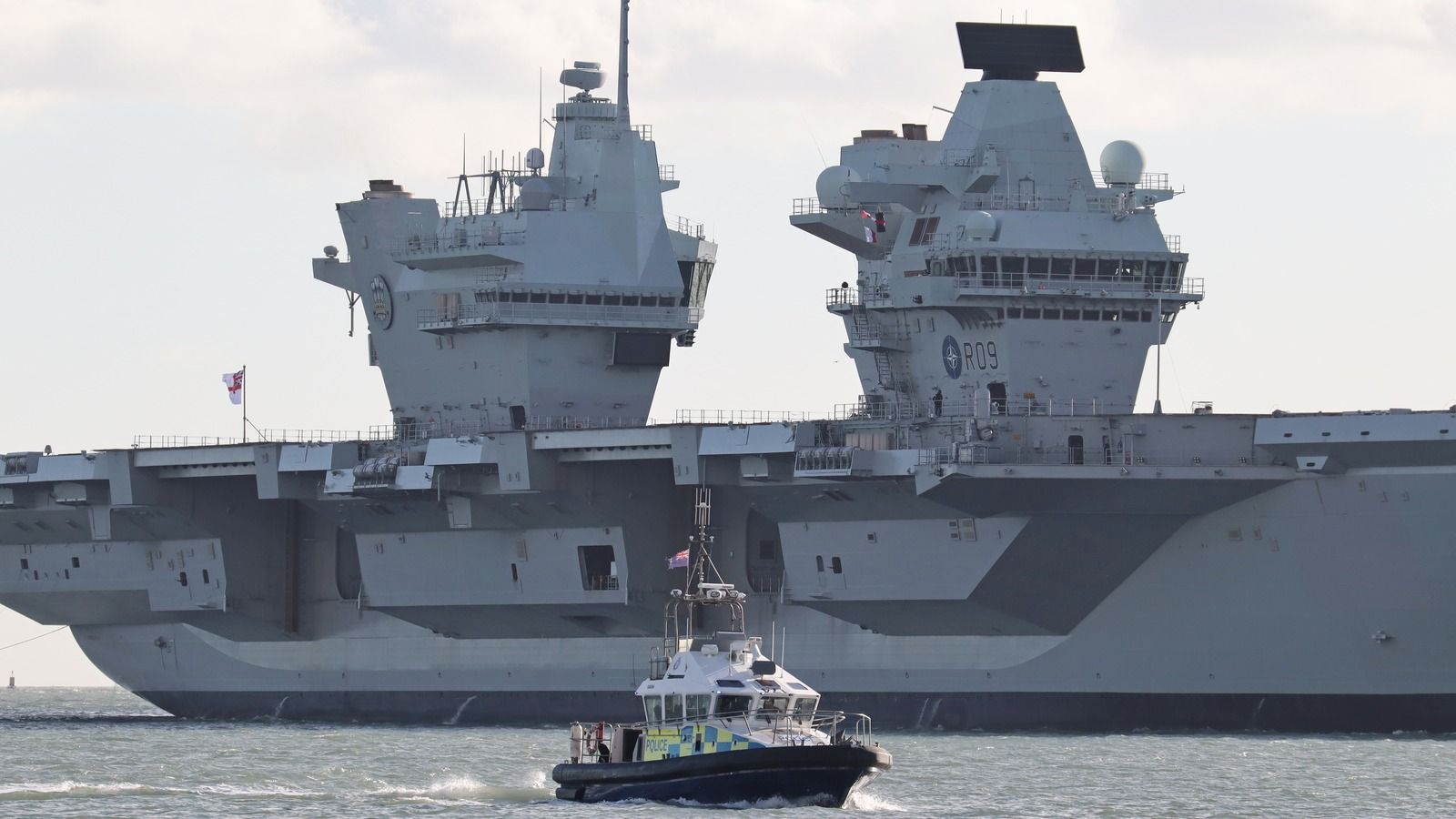The Reason Why British Aircraft Carriers Have Two Islands
The Reason Why British Aircraft Carriers Have Two Islands
An aircraft carrier's island — the superstructure rising high above the flight deck — is one of the most important areas of the ship. It contains various radar and communication equipment for managing flight deck operations and the bridge.
One less glamorous aspect of the island is that it also contains a system of pipes called trunking that carries exhaust away from the engines and delivers a constant supply of fresh air. When the British Royal Navy was in the early stages of designing the Queen Elizabeth-class aircraft carrier in 2001, an important consideration was the increased separation between the forward and rear engine compartments. Redundant engine compartments have long been a feature of military vessels. If one engine compartment is damaged, the remaining propulsion system can continue to operate the ship.
On an aircraft carrier, in particular, funneling the exhaust out of the engine rooms is challenging because so much of the deck space is dedicated to the takeoff and landing of fighter jets. Previously, separate redundant engine rooms were accommodated by a very long island spanning both engine compartments. Unfortunately, that proved less than optimal for maximizing flight deck real estate.
Another proposed alternative was for the trunking from each engine compartment to take a longer, convoluted path to exit through a single smaller space, but the diameter of the trunking would have been a massive 2.4 meters, eating into the below-deck space. Also, there were limitations on the number of angles they could have used for the trunking.
Source: SlashGear


